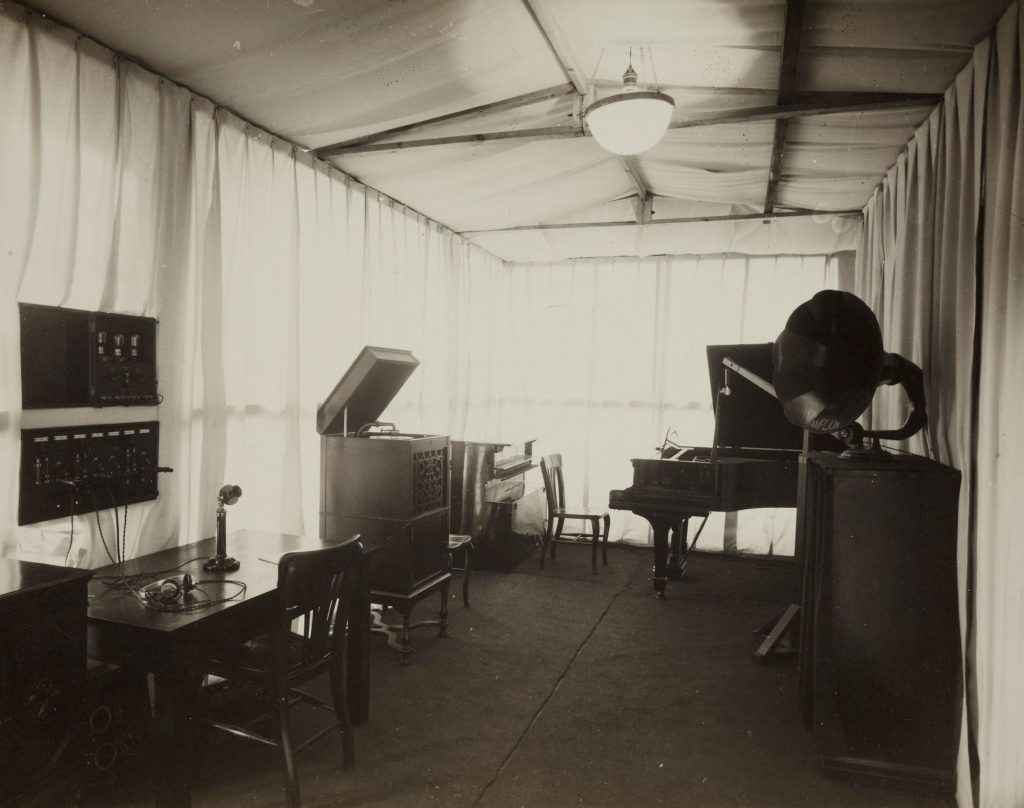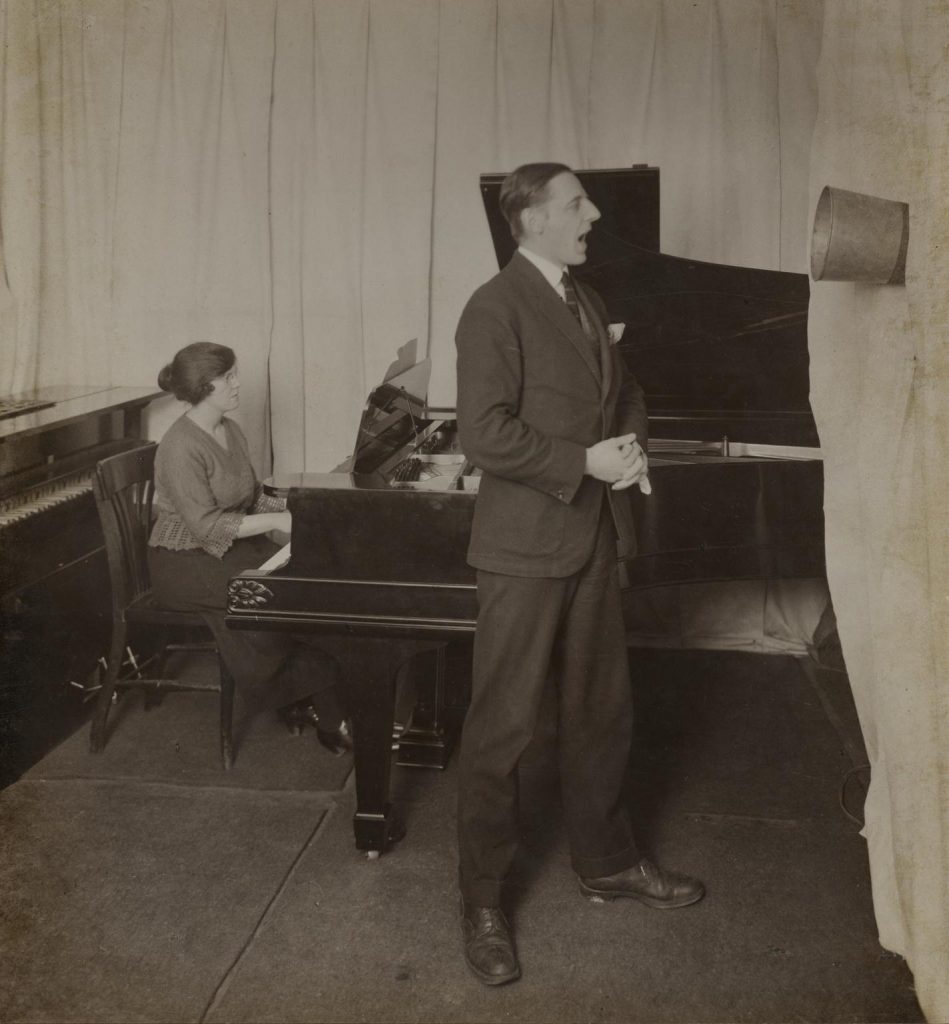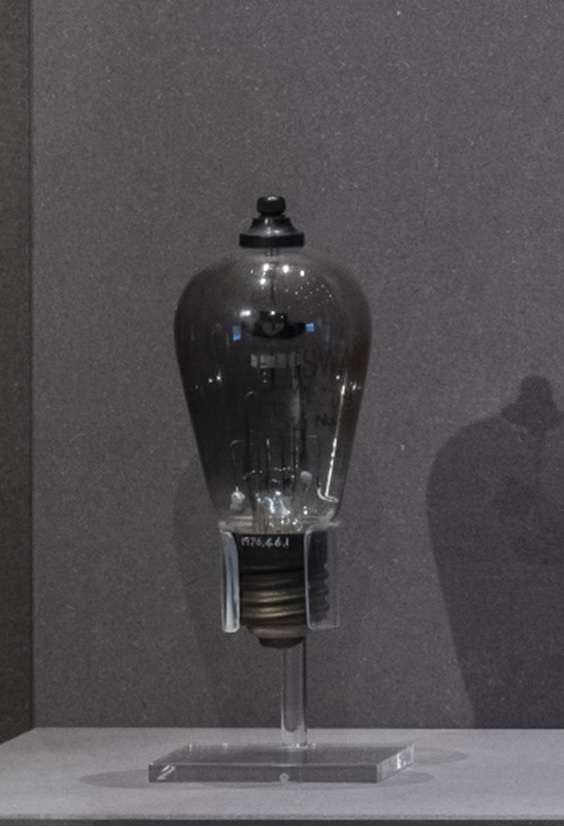Please note, the Celebrating 100 years of the BBC in Manchester display closed on 3 May 2023. To find out what exhibitions and activities are on today, visit our What’s On section.
At 18.00 on 15 November 1922, Manchester fell silent. Streets emptied as friends and neighbours crowded together indoors around hissing radios. Suddenly, through the crackle and static, a violin began to play. Broadcasting had arrived in Manchester.
Liebeslied by Fritz Kreisler. This was the first song that played on Manchester’s first radio station, played live by Kreisler from 2ZY’s studio.
Manchester was home to one of the first BBC radio stations, radio 2ZY. It was established and run by Metropolitan Vickers, a major Manchester engineering company, under the banner of the new British Broadcasting Company consortium, a group of businesses that wanted to bring radio to the UK, in part so they could sell radio sets. 2ZY may have begun broadcasting a day after the London station 2LO, but it was determined to stand out and deliver unique programmes directly into people’s homes.
The world of radio was very different in 1922. Not many people owned their own radios as factory-made radios were expensive and home-made radios were poor quality. Broadcasts were limited to a few hours an evening, and the further you lived from one of the few radio stations the harder it was to hear anything at all. Even so, the ability to get news, music and entertainment directly in your home captured people’s imaginations, and the popularity of radio grew and grew.
2ZY broadcast from Metropolitan Vickers’ Research Department in Trafford Park. This was before dedicated studios existed, so the 2ZY staff converted an office room into their broadcasting studio by putting down thick carpets and hanging heavy curtains to reduce sounds from the rest of the building.

Science Museum Group © The Board of Trustees of the Science Museum
An additional limitation for the studio was the microphones, which struggled to pick up voices. To get around this the 2ZY staff installed funnels in the walls of the studio to direct the sounds into the microphones.

Science Museum Group © The Board of Trustees of the Science Museum
And on one occasion the studio proved too small to fit an orchestra that had been invited to perform on radio. The studio windows had to be removed to get everyone (and their instruments!) to fit in the space, some having to sit on window ledges.
Despite these drawbacks, 2ZY were able to put out a wide variety of programmes for their audiences. One thing they pioneered was making programmes for children. The 2ZY staff would adopt fanciful personas like ‘The Sandman’ and ‘The Cloud Lady’ and read stories and sing to children listening at home. This proved to be so popular that it was adopted by the wider BBC and has a lasting legacy in everything from Playschool and Blue Peter to CBeebies.

Science Museum Group © The Board of Trustees of the Science Museum
After only a year of operation from Trafford Park, 2ZY moved to Dickinson Street in Manchester city centre. This was to make travelling to the station easier for performers and presenters. The only surviving object from the Trafford Park days is a valve that helped boost the signal to listeners. Early reports state that people could receive 2ZY’s broadcasts up to 30 miles away on a good day.

Manchester has continued to be a centre of broadcasting innovation over the past 100 years. The first television studio outside of London was established in Manchester in 1954, and today Manchester is home to MediaCityUK, a hub for the creative industries. Since 2011 it has produced programmes such as Breakfast, Match of the Day and Blue Peter.
It is also home to one of the branches of BBC Research and Development, a department that creates new technology that will improve our experience of watching, listening and streaming. In the past BBC R&D have brought us noise-cancelling microphones, digital radio and HD TV. As we look to the next 100 years of broadcasting the BBC are experimenting with new ways of creating flexible programmes that allow you to edit them in real time to match your needs. You can find out more information about their latest projects here.
As we think about how far we’ve come in the past 100 years of broadcasting, from limited radio broadcasts to on-demand streaming, it’s exciting to see these new technologies being pioneered by the BBC in Manchester and imagining what the future will hold for how we watch and listen.
To discover more about the BBC’s role in Manchester visit our new BBC 100 display featuring 14 objects and photographs with their accompanying stories—including those featured above. Open now until February 2023, the display takes you on a journey through the past, present and future of the iconic broadcaster’s time in Manchester, combining the Science Museum Group’s collection of historic never-before-seen objects, with cutting-edge new technologies being developed today.